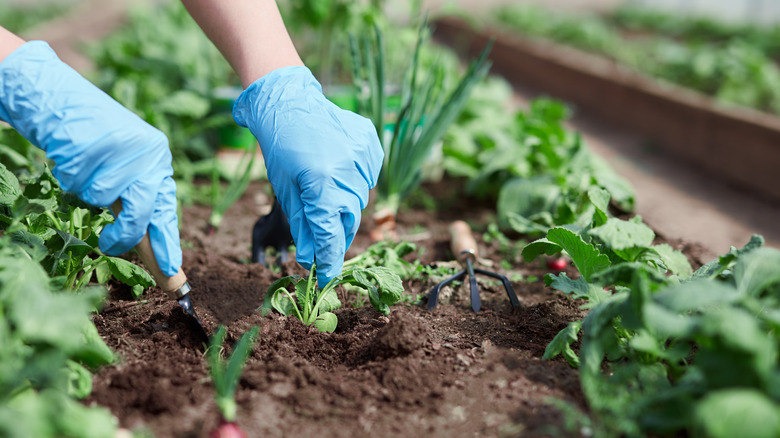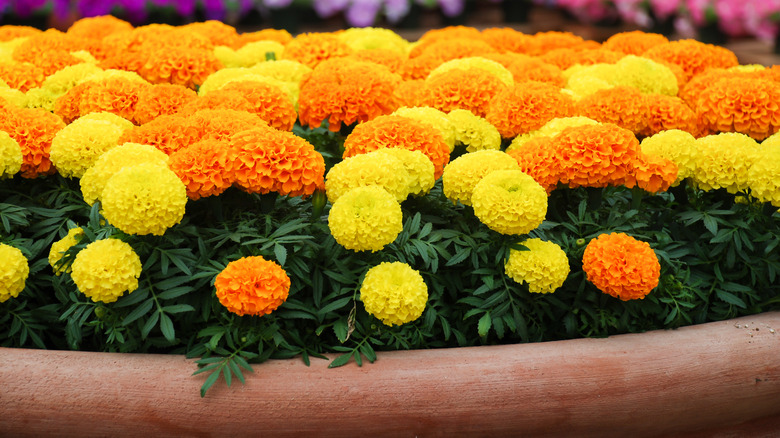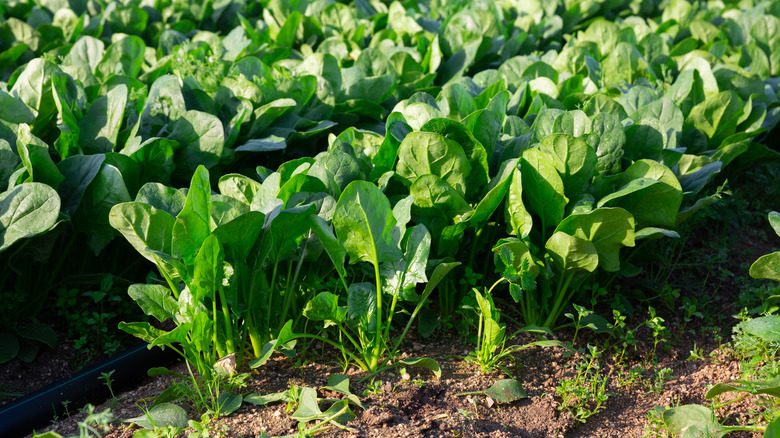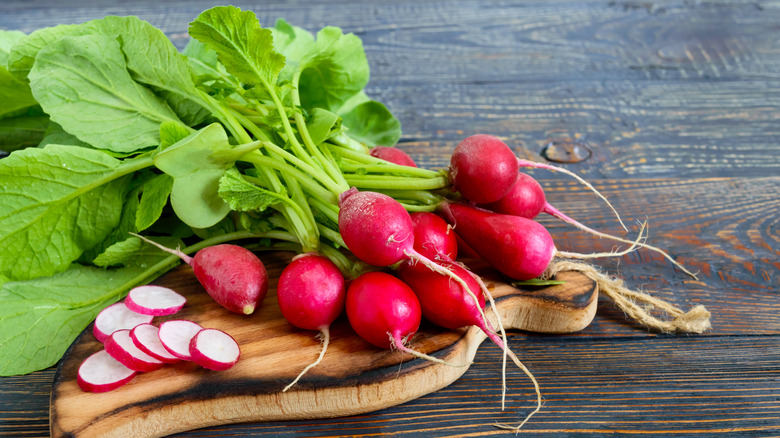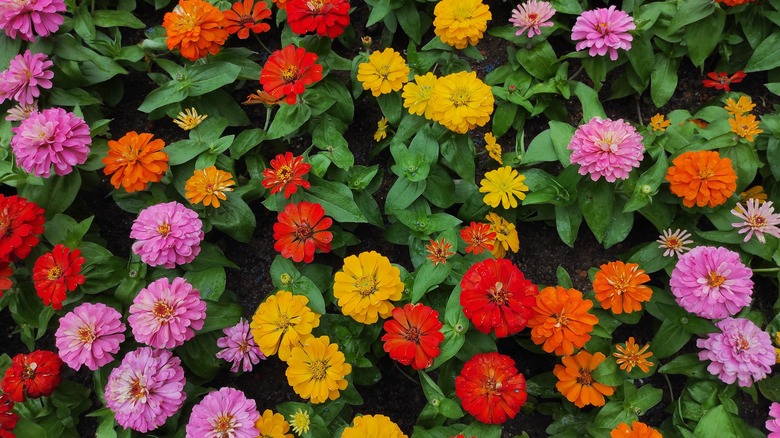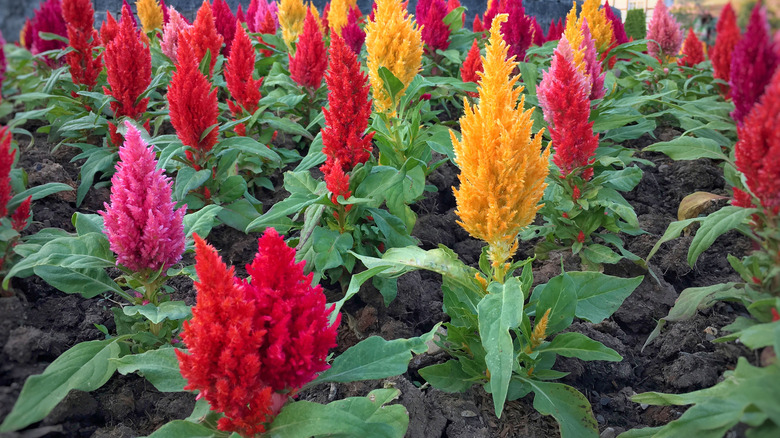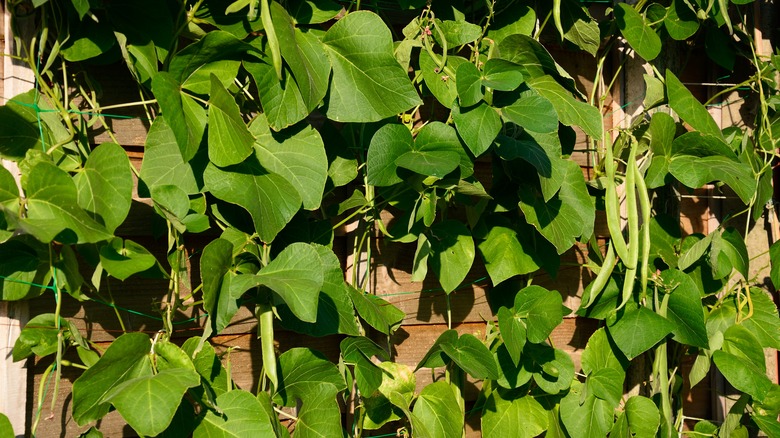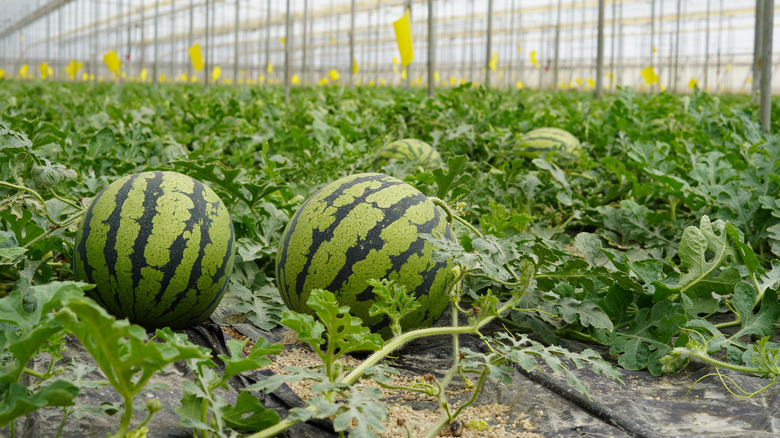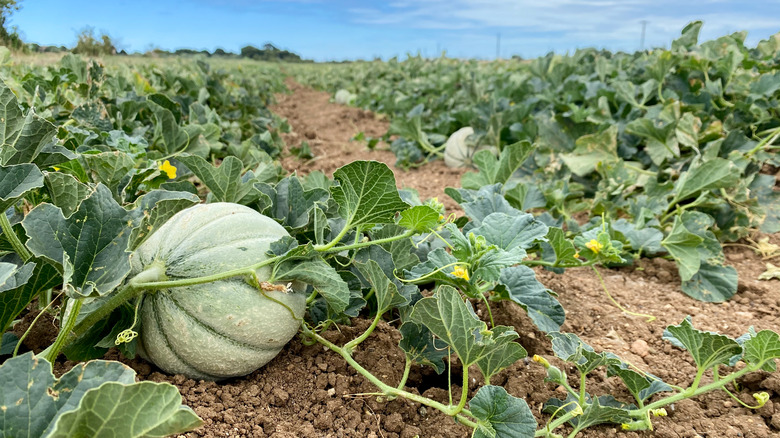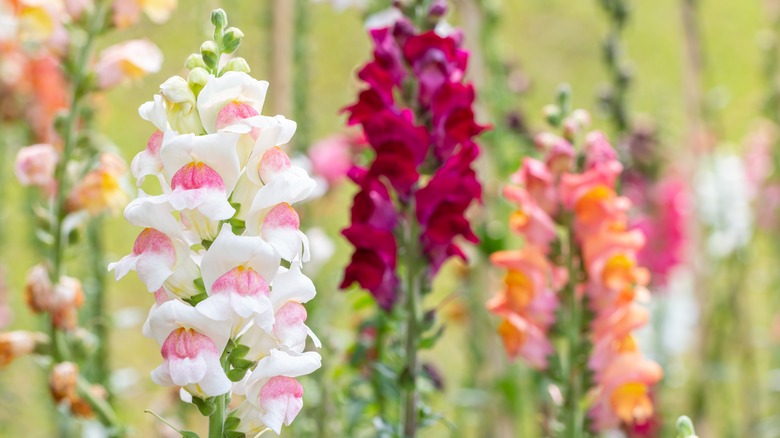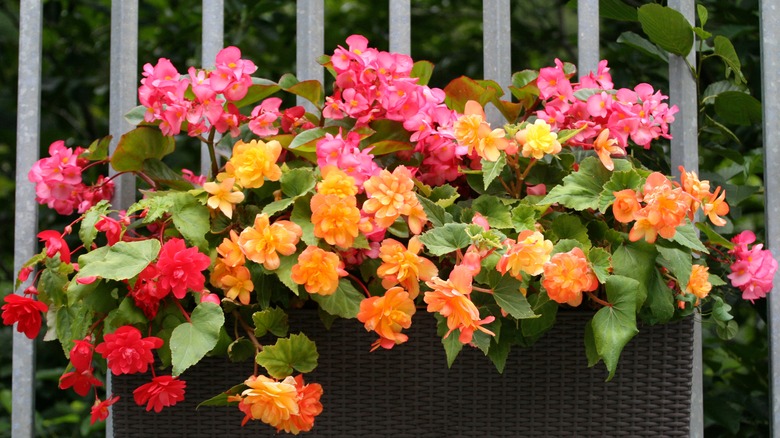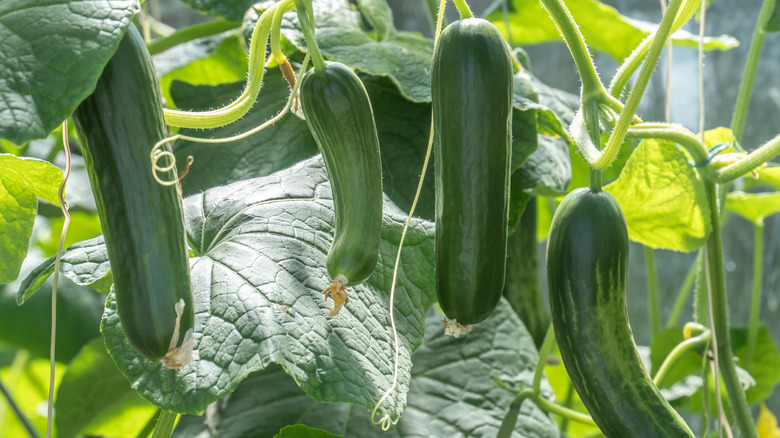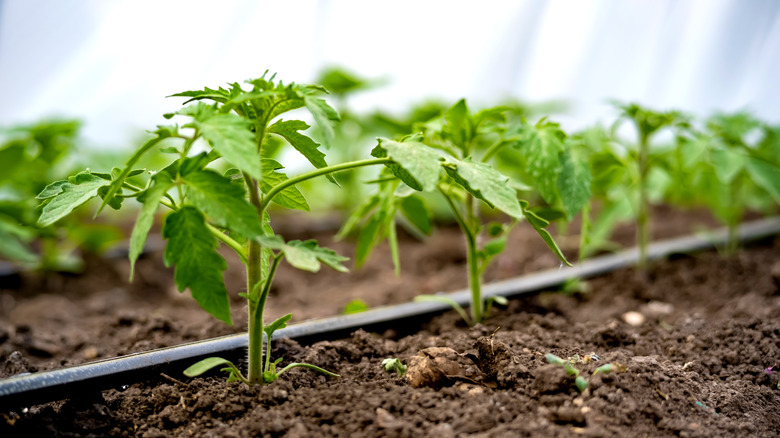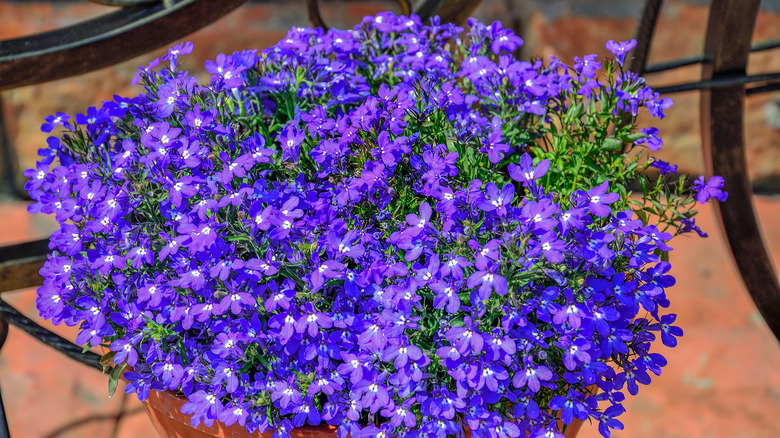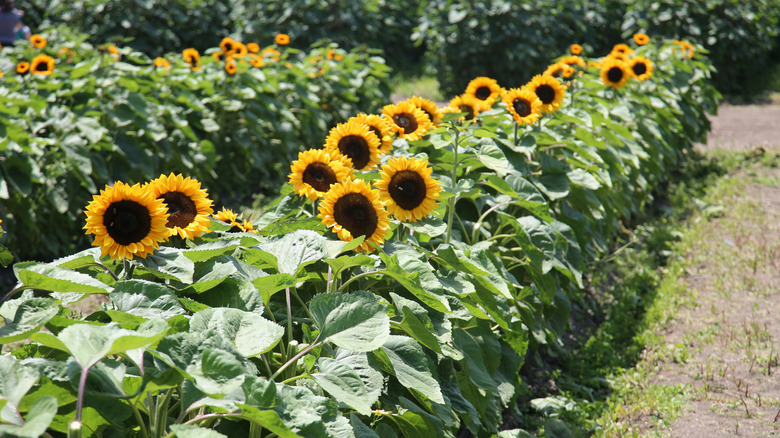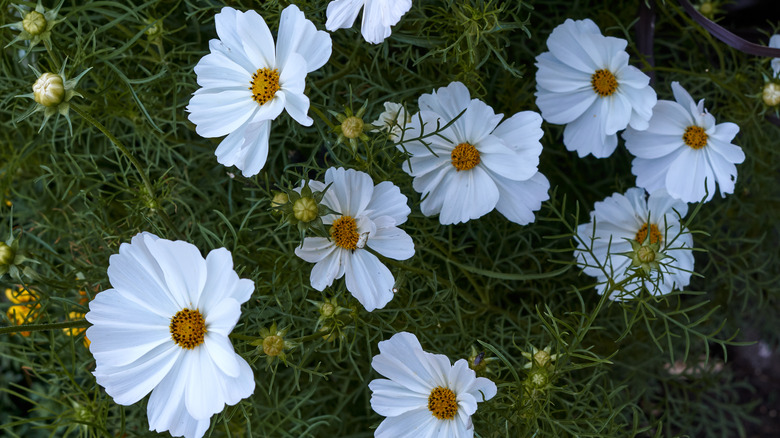15 Annual Plants Perfect For Your Garden
If you're a gardener, you already know that there's nothing more satisfying than watching all your plants bloom. After months of hard work, everything just seems to come together perfectly. Somehow, the plants just look better together, especially if you've paid specific attention to creating a beautiful layout. In fact, sometimes, the most fun part is creating a layout that you know will look incredible in a few months.
If planning is your favorite part of the process, annual plants are perfect since they allow you to customize your garden's layout each year. Plus, according to Gardening Know How, annual seeds are generally much cheaper than perennials — and with thousands of varieties, you're bound to find annual plants that you love. Who knows, you may even find yourself planting your favorites year after year!
Looking for some inspiration to get started? We've rounded up 15 of our favorite annual plants that are the perfect addition to your garden. Whether you prefer to grow flowers, veggies, or both, we've got you covered.
1. Marigolds
Whether you're starting a butterfly garden, hoping to keep pests away, or simply looking for a pretty flower, marigolds (Tagetes) are a great addition to your plant roster. According to Garden Design, marigolds emit a substance that whiteflies — a major pest for tomato plants — will actively avoid. Farmer's Almanac claims that they also tend to attract butterflies, which can truly make your garden feel alive.
Bloom Season: Summer, early fall
USDA Growing Zone: 2 to 11
Growing Conditions: Full or part sun
Soil Type: Any soil with neutral pH
Size: Varieties range from 6 to 24 inches tall
2. Spinach
If you're looking for an easy-to-grow leafy green, spinach (Spinacia oleracea) is a great pick. A single plant can provide greens throughout the whole summer if you pick the leaves carefully (via Gardeners' World). That being said, be careful to plant spinach early or late in the season, especially if you're in a warmer USDA zone — according to Harvest to Table, heat causes spinach plants to flower, then die.
USDA Growing Zone: 5 to 10
Growing Conditions: Full sun to part shade
Soil Type: Well-drained soil with a pH of 6.0 to 6.5
Size: Around 1 to 1½ feet
3. Daikon radishes
Do you want to up your homegrown salad game? Radishes (Raphanus sativus) are another great option. According to Gardener's Path, they thrive best in cold weather, so they're the perfect way to start (or end) your growing season. Plus, radishes are full of antioxidants and have lots of incredible health benefits, including lowering blood sugar and helping to prevent gallstones (via VeryWell Fit).
Bloom Season: Late spring to early fall
USDA Growing Zone: 2 to 11
Growing Conditions: Full sun
Soil Type: Well-draining soil with a pH of 5.8 to 6.8
Size: 1 to 1½ feet fall
4. Zinnia
Zinnia flowers (Zinnia elegans) are a fun option if you'd like to add some color to your garden — the flowers almost look like bright pom-poms! Plus, they usually come with friends: according to Gardenia, some Zinnia varieties provide easy access to nectar all summer, making them favorites for hummingbirds and butterflies.
Bloom Season: Summer to fall
USDA Growing Zone: 2 to 11
Growing Conditions: Full sun
Soil Type: Well-drained soil with a pH between 5.5 to 7.5
Size: Stems can be as short as 6 to 8 inches tall (dwarf) or up to 3 feet tall
5. Celosia
Celosia flowers (Celosia) are a great way to add visual variety to your garden. They are said to resemble candle flames or broccoli heads. According to the National Research Council of the National Academies, celosia are even edible! While various varieties prefer different growing zones, Home Stratosphere claims that some can be grown year-round in zones 10 and 11.
Bloom Season: Late spring, summer
USDA Growing Zone: 2 to 11
Growing Conditions: Full sun
Soil Type: Well-drained soil
Size: Depending on the variety, as small as 6 inches or up to 3 feet tall
6. Green beans
Green beans (Phaseolus vulgaris) are a relatively easy path to growing your own food, plus they'll add lots of height and texture to your garden. You can even use several of the super-tall runner plants to section off parts of your garden. Just be sure to watch for aphids and mildew — according to Morning Chores, they're two of the plant's biggest foes.
Bloom Season: Spring, summer
USDA Growing Zone: 3 to 10
Growing Conditions: Full sun
Soil Type: Moist with a pH of 6.0 to 7.5
Size: 6 to 8 feet tall
7. Watermelon
If you're a fan of the summer fruit, we've got good news: watermelons (Citrullus lanatus) are surprisingly easy to grow! Unfortunately, though, they'll also take up a lot of space — according to Farmer's Almanac, it's best to give each plant up to 20 square feet. SF Gate also warns that the plants need lots of heat to grow.
Bloom Season: Late summer
USDA Growing Zone: 3 to 11
Growing Conditions: Full sun
Soil Type: Semi-sandy, well-drained soil with a pH of 6.0 to 6.5
Size: 15 to 24 inches tall, vines sprawl out 6 to 8 feet wide
8. Honeydew
What do watermelons and honeydew (Cucumis melo) have in common? They're both delicious, easy to grow, and take up tons of space in the garden. Luckily, honeydew melons can be planted relatively closer together (via SF Gate), making them a practical option. Plus, you're in luck if you live in a warmer climate — according to Dr. Joe Masabni, your honeydew will be sweeter!
Bloom Season: Late summer
USDA Growing Zone: 4 to 11
Growing Conditions: 6+ hours of full sun
Soil Type: Moist yet well-draining soil with a pH of 6.5 to 8.0
Size: 18 to 24 inches tall
9. Snapdragons
While snapdragons (Antirrhinum) are a beautiful addition to a garden, they also deter a cute but frustratingly hungry herbivore: deer (via Gardening Know How). Try planting snapdragons around your garden's perimeter to deter the animals. If you live in a warmer climate, you might even be able to use the flowers as an ongoing deterrent: according to Adam's Farm, snapdragons can be grown as perennials in warmer zones.
Bloom Season: Spring and fall
USDA Growing Zone: 7 to 11
Growing Conditions: Full sun
Soil Type: Well-draining soil with a pH of 6.2 to 7.0
Size: 6 to 36 inches
10. Begonia
Begonias (Begoniaceae Begonia) are soft, delicate flowers. And despite their name, you'll be wishing they stick around next year, too. According to University of Minnesota Extension, the bushy plant is great for filling empty garden patches. But keep an eye out for bud rot and mildew — two of the plant's biggest enemies, according to Brecks.
Bloom Season: Early summer to frost
USDA Growing Zone: 3 to 11
Growing Conditions: Partial sun or full shade
Soil Type: Slightly damp, sandy soil with a pH of 5.5 to 6.5 (via Horticulture)
Size: Varies by species, generally around 1 foot tall
11. Zucchini
One of our favorite things about having a garden is the abundance of fresh produce, and zucchini plants (Cucurbita pepo) are no exception! While you might have to replant zucchinis every year, it's well worth the energy to enjoy them in your cooking. Plus, according to Gardener's Path, the veggies are relatively simple to grow!
USDA Growing Zone: 3 to 9
Growing Conditions: Full sun and hot weather (above 70 degrees Fahrenheit)
Soil Type: Rich, well-drained soil with a pH of 6.0 to 7.5
Size: 2 feet long, up to 3 feet wide
12. Cucumber
Another of our favorite edible annuals, home-grown cucumbers (Cucumis sativus) are the perfect way to up your salad game. Cucumbers are also relatively easy to grow, though according to Harvest to Table, they are frequently targeted by aphids, so you may want to pair them with marigolds to keep bugs away (via Gardening Channel).
USDA Growing Zone: 4 to 12
Growing Conditions: Part or full sun, humidity
Soil Type: Rich, loose soil with a pH of 6.0 to 6.5 (via University of Minnesota Extension)
Size: 2 to 3 feet tall, with vines sprawling 6 to 8+ feet
13. Lobelia
With lobelia (Lobelia spp.) plants, you get a two-in-one: an herb with health benefits (via Healthline) and beautiful flowers. It's also relatively easy to grow lobelia plants, plus Gardenia notes that they've been known to attract butterflies! While some varieties are biennials, the majority of lobelia plants are annuals (via Gardening Know How).
Bloom Season: Spring to fall
USDA Growing Zone: 2 to 11
Growing Conditions: Partial or full sun
Soil Type: Moist soil with a pH of 5.5 to 6.5
Size: Generally 3 to 7 inches tall (though some varieties grow up to 3 feet tall)
14. Sunflower
Sunflowers (Helianthus annuus) are a bright, cheery addition to any garden! According to American Meadows, they also help to improve life for local pollinators. If you don't have access to a yard or would prefer to grow your plants in pots, it's best to pick a dwarf sunflower plant (via Gardener's Path).
Bloom Season: Mid-late summer to fall
USDA Growing Zone: 4 to 9
Growing Conditions: Full sun
Soil Type: Nutrient-rich with a pH of 6.0 to 7.5
Size: Dwarf varieties range from 1 to 3 feet in height, while larger varieties can reach up to 15 feet tall
15. Cosmos
While Cosmos flowers (Cosmos bipinnatus) may look simple, they're a butterfly favorite (via Gardens with Wings) and are sure to attract lots of winged visitors. According to Gardener's Path, they're also known for their durability, so they're ideal if you haven't been able to keep up with garden maintenance. Since they're so easy to grow, chances are that you'll be planting them year after year.
Bloom Season: Summer
USDA Growing Zone: 2 to 11
Growing Conditions: Full sun
Soil Type: Prefer poor soil (few nutrients) and a pH of 6.0 to 8.0
Size: 1½ to 5 feet tall
